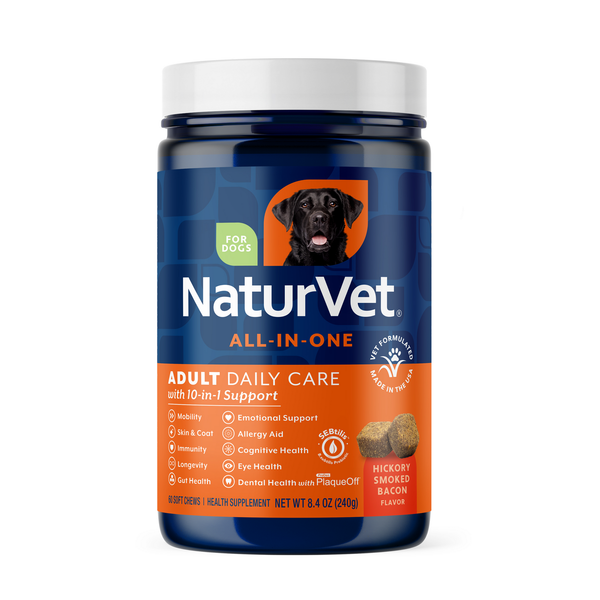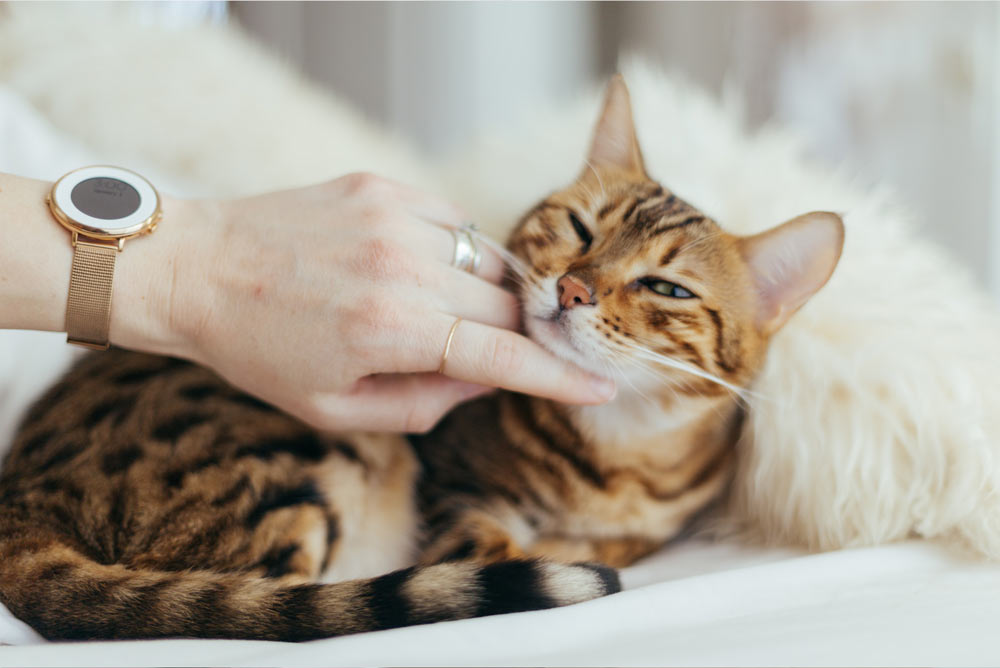5 Tips For Cat Shedding
Shedding is a natural phenomenon in cats. However, it can also be a point of frustration for cat parents.
Shed hair seems to stick to everything, whether it's the sofa, your favorite blanket, or the nice outfit you've set aside for that important meeting. Shedding peaks in the spring, tapers off in the summer, and spikes again in the fall before declining for the winter. It's impossible to prevent a cat from shedding, but you can manage the amount of shedding through diet and grooming.
Here is everything you need to know about cat shedding and effective tips to help you cope with the process.
What Causes Shedding in Cats?

The cycle of shedding in cats is influenced by daylight, referred to as the photoperiod. The amount of sunlight a cat gets influences the shedding cycle. Shedding is common in all cats but the most obvious cause in outdoor cats is usually changes in daylight.
Cats have the heaviest haircoats in the winter so they can keep warm and the lightest in the summer so they can be cool. Indoor-only cats have less variance in their shedding cycles since they have less direct exposure to sunlight and significant exposure to artificial light.
Although hair shedding is normal in cats, excessive or unusual shedding can be a sign of an underlying medical issue. If you suspect your cat is suffering from a skin disorder, please seek medical attention from your vet.
Our Top 5 Tips for Cat Shedding
Here are five effective tips for managing healthy cat shedding:
1. Brush Your Cat Regularly

Simply brushing your cat regularly can make a huge difference in the amount of the cat's hair floating around. It can also help minimize hairballs. Regular brushing removes dirt, dead hair, and dander – all of which contribute to unhealthy skin, and prevents your cat from getting matted, unruly hair.
Your cat is already naturally committed to grooming, but with a busy schedule of flopping on the floor, sleeping in the sun, and finding the comfiest thing to lay on, sometimes they need a little help keeping up with their grooming. And brushing your cat helps with more than just shedding.
It's also a great way to give your cat attention!
Most cats enjoy a good brushing, but be careful not to overstimulate them. It's recommended to have short brushing sessions every day in order to prevent mats, decrease shedding, and not overwhelm your cat.
2. Create a Designated “Shedding Spot”

Cats love to hang out in places that we don't want to be covered in hair. You can usually spot them around your wardrobe, handbag, backpack, and other high-traffic areas around the house. You can't convince them that your wardrobe isn't the perfect cat bed, but you can give them an alternative.
Create their own safe space. Choose a place where your cats like to hang out, somewhere you feel is a good place for shedding hair.
Cats usually like places that are safe, partially hidden, and warm. Put a blanket or soft towel for your cat to lie on. A fleece blanket works quite well for cats that like to knead. Also, a blanket is something that's super easy to wash regularly to remove the hairs.
Having a permanent spot doesn't necessarily reduce the amount of hair, but it does help keep shedding to a smaller area and away from your furniture and other valuable belongings.
3. Proper Hydration and Diet

Ensuring your cat is well-hydrated will improve their overall coat quality and health. This sounds easy but it's often not so easy to achieve. Cats are known for not drinking enough water, so how can you change this?
The easiest way is to introduce wet food to your cat's diet. A cat can get up to half of their recommended daily water intake from a single can of wet food.
Other options include refilling your cat’s water dish or even changing where it’s located somewhat regularly. Make sure your cat feels safe near their bowl, or consider elevating it for easier access.
Some cats enjoy drinking fountains or drinking from a glass on your bedside table.
On the other hand, poor diets or diets lacking in essential vitamins and minerals can cause excess shedding because they make your cat's hair more brittle and more likely to fall out.
Adding more omega-3 and omega-6 fatty acids to their diet is the easiest change to make, as these compounds directly impact the amount of shedding that your cat ultimately does. It will take around six weeks for you to start seeing results.
This means that supplements or skin support food should be given year-round.
4. Reduce Stress in Your Cat's Environment

Excessive shedding can be a stress response in cats, so make sure they have a calm, relaxing environment to unwind. If you've recently moved, added a new family member, or even drastically changed your schedule, your cat can be stressed as a result. Look for ways to reassure and calm your cat.
Using pheromones can help reduce their stress, but it's also important to give them some space and to help them feel secure, even amid change.
Also, if you have other animals, like a dog in your home, that might be causing your cat anxiety. Create a cat-only zone in your home where they can be alone. This could be a spare bedroom or a basement that you can block off access to with a baby gate or child latch. If you live in a small space, take advantage of any vertical space that you can add with shelves or cat trees.
This gives your cat a new way to explore the room without feeling trapped by other animals in the house.
5. Make An Appointment With Your Vet

Excessive shedding can be a sign of multiple medical issues in cats. If you find that your cat is shedding more than usual (outside of shedding season), it might be time for a check-up with the vet to make sure everything is okay.
Some of the conditions that cause excessive shedding are stress and anxiety, allergies, and a poor diet. However, it can also be caused by infections, sunburn, or a reaction to certain medications.
It’s easy to forget that animals can and often do sustain sunburns – especially animals with white fur and/or light skin. In cases like this, you will need to see your vet to get medicine to ease the discomfort caused by the burn and to help the area heal and promote the regrowth of their hair.
But in all likelihood, your cat’s shedding is completely normal! And we hope these tips help you manage your purr-baby’s excess floof quickly and effectively.
JOIN OUR PACK
Follow us @NaturVet on social media to fill us in on any tips we might have missed. And, check out the rest of NaturVet.com. We’ll keep you up to date on all our latest pet resources, supplements, tips and tricks, and more – everything you need to be the best pet parent possible.























